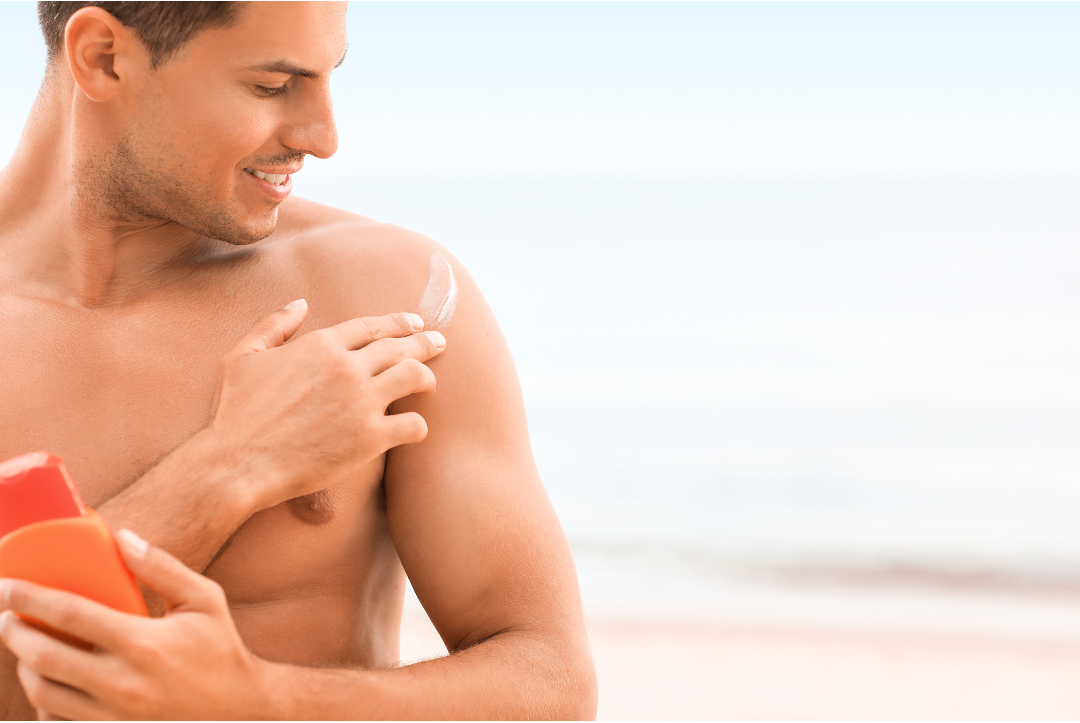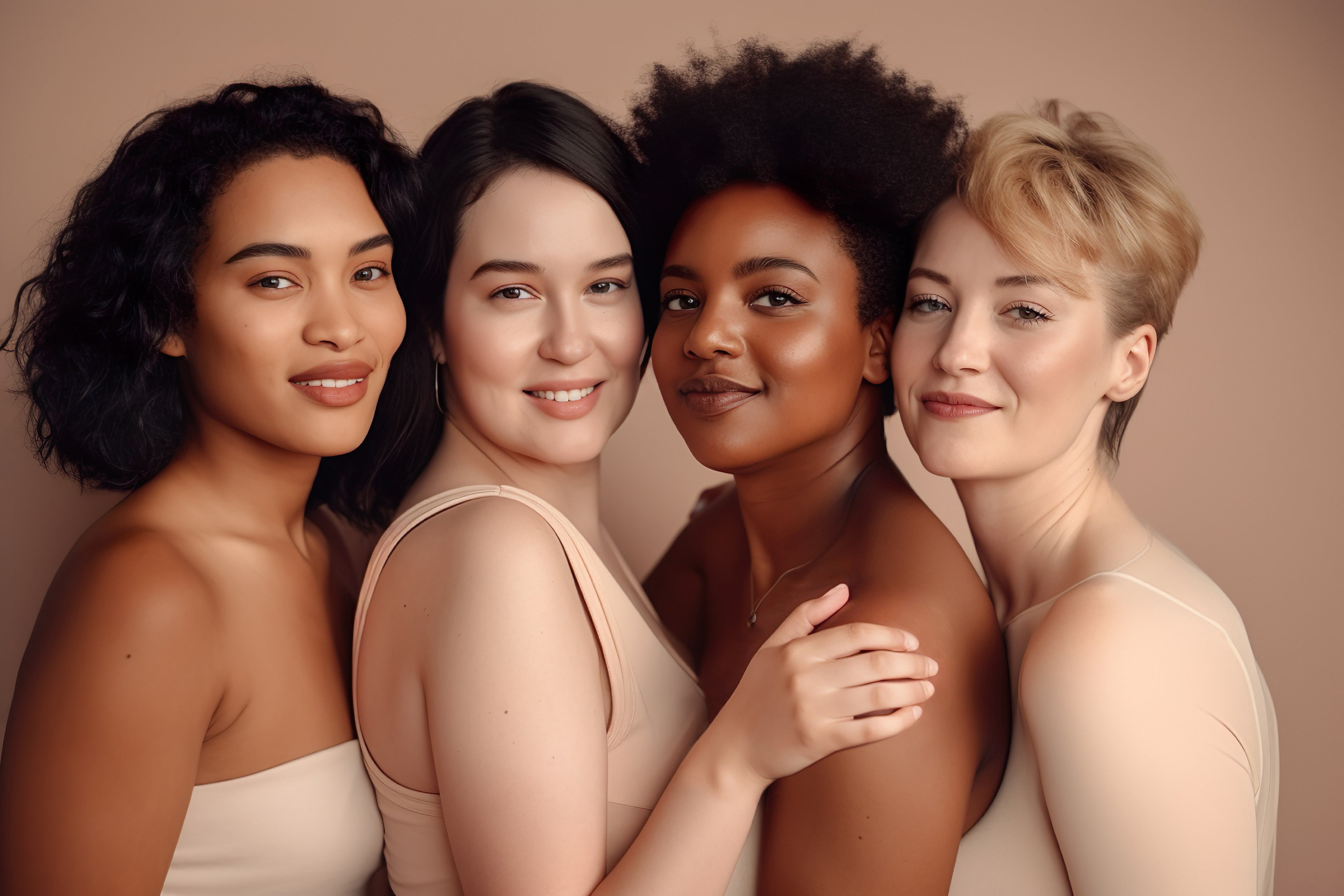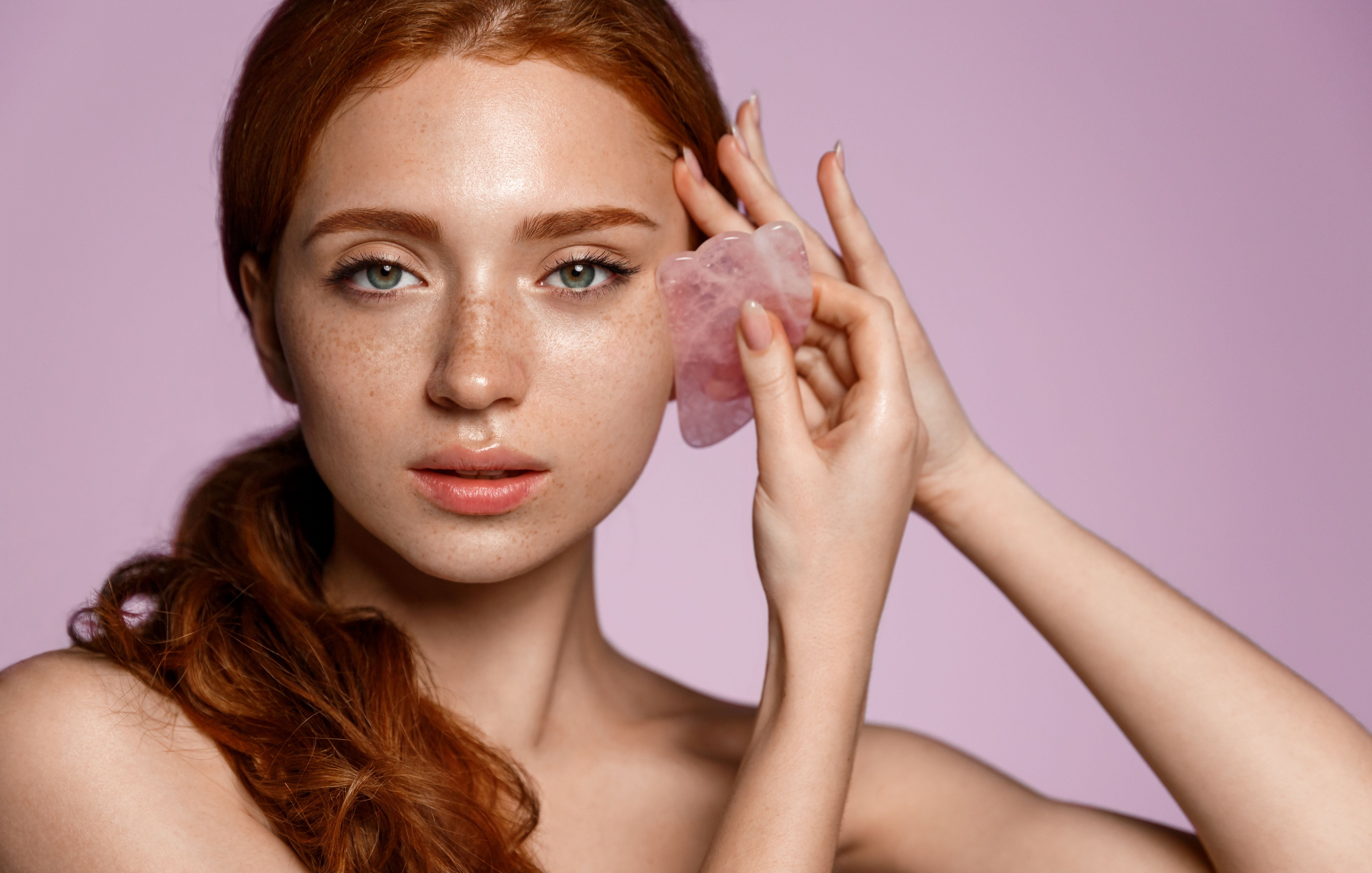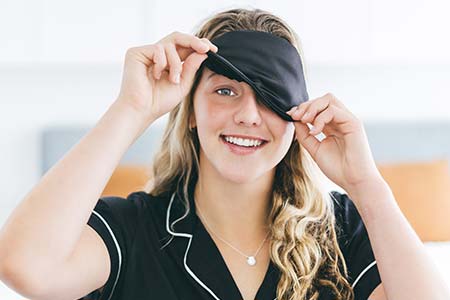Sun Series Part 3: SPFcore - the skincare trend you can't ignore

Australia is known for its harsh sun and unfortunately, we are world leaders in skin cancer incidence with Melanoma incidence rates in Australia and New Zealand approximately 2-3 times higher than those in Canada, the US, and the UK. As a result, we have some of the strictest sunscreen regulations in the world and produce some of the best SPF products/sunscreens too!
Over the last few decades, research and education about the importance of sunscreen use has grown, as well as innovation in sunscreen technologies, and we have seen shifts in the amount of SPF commonly seen in sunscreens from SPF 15+ back in the 90s to 30+ and now 50+ is the mainstay on the shelves. There should be no excuse for anyone not to know that wearing sunscreen is imperative for reducing your risk of skin damage, including skin cancers (though there is worrying research that millennials and Gen X are not on top of it – saving that for a different story!). But have you ever wondered what exactly SPF means and how sunscreen works? Knowledge is power so read on as we answer questions you never knew you had about the world of SPF!
What is SPF?
SPF stands for Sun Protection Factor. It is a measure of how well a sunscreen protects the skin from the sun's ultraviolet (UV) rays. As we know, UV rays can cause sunburn, premature aging, and skin cancer, so it's crucial to shield your skin from their harmful effects.
How is SPF measured?
The SPF rating of a sunscreen indicates its ability to block UVB rays, which are primarily responsible for sunburn. The higher the SPF, the greater the level of protection. For example, a sunscreen with SPF 15 blocks out 93% of UVB rays, SPF 30 filters out approximately 97% of UVB rays, while SPF 50 filters out around 98%. That may not seem much of a difference but considering most people apply far less than the required amount to reach the SPF on the bottle (read on below), the higher SPF you apply the better.
It's important to note that SPF only measures protection against UVB rays, not UVA rays. UVA rays can also cause skin damage, so it's essential to choose a broad-spectrum sunscreen that protects against both types of rays. Check out Part 1 of our sun series to learn about the different types of UV rays.
How is SPF tested?
Sunscreens undergo rigorous testing to determine their SPF rating. The most common method is the in vivo test, which involves applying the sunscreen to a group of volunteers and exposing their skin to UV radiation. The amount of UV radiation required to cause erythema (redness/sunburn) with and without the sunscreen is then compared to calculate the SPF. For example, if it takes 5 minutes for skin to become red without sunscreen and 75 minutes with the sunscreen (x15) then the SPF rating for that sunscreen would be 15. This calculation should not be used to determine how long you can stay in the sun without reapplying sunscreen! Many factors determine how effective your SPF is (read on to find out more) and how long it will last so don’t let that SPF number fool you.
How much sunscreen should I apply?
The amount of sunscreen you need to apply to reach the SPF value on the bottle is 2mg per square centimeter (that’s the amount applied when conducting the SPF testing described above). In reality, most people apply far less than that with one review finding it's more like 20-50% of the amount needed to reach the SPF on the label. So why do the scientists test SPF in this way when it has little correlation to the real-world use of sunscreen? This amount has been shown to give the most reproducible results so chemists can be confident in the SPF labels they assign to a formula.
So what does that mean in the real world? Unless you are a math genius or just really want to measure this out, 2mg per centimeter squared is around about ¼ teaspoon for an average-sized face. Someone (who really did want to measure it out) worked out that ¼ teaspoon is about the same as 2 finger-lengths of sunscreen which seems a much easier way to gauge if you are using enough, rather than carrying around your measuring spoons. As for the rest of your body, the Cancer Council recommendation for adult application is one teaspoon for each arm, leg, body front, body back and face (including neck and ears). That equates to a total of approximately 7 teaspoons for a full-body application. Obviously, every body is different so this is just a guide but in the case of sunscreen, more is more, don’t be stingy, and don’t forget to reapply regularly!
Applying the correct amount of sunscreen can feel uncomfortable and is a potential barrier to people using enough. One solution to this may be to use a sunscreen with a higher SPF to compensate for a shortfall in application, or doing multiple lighter layers might also help. One study proposed applying one layer of sunscreen before sun exposure and then a quick reapplication within the first hour.
Interesting fact: the idea of applying sunscreen is to form a layer on the skin. By rubbing your sunscreen in too much, you are actually disturbing this layer leading to uneven distribution of SPF and possibly rubbing it off altogether! Always blend sunscreen in gently and evenly and then leave to dry down rather than rubbing it all the way in (and off!).
How long does sunscreen last?
Several factors can affect how long sunscreen lasts on your skin. These include:
- SPF level: as mentioned, the SPF is calculated based on how long it takes for skin to become red with the sunscreen compared to without so as long as you are applying the correct amount, the higher the SPF, the longer it will last
- Amount applied: noting that you are probably not applying enough! By applying less sunscreen than recommended, you are reducing the SPF from what is on the label and therefore how long your skin will be protected
- Sunscreen Type: Different types of sunscreen, such as lotions, sprays, and sticks, may have varying duration of effectiveness.
- Sun Exposure: The intensity and duration of sun exposure can impact how long sunscreen lasts. If you are spending an extended period in direct sunlight, it is advisable to reapply sunscreen more frequently.
- Sweating: Physical activity that causes sweating can diminish the effectiveness of sunscreen just as swimming can. Reapply after swimming or sweating to ensure continuous protection.
- Wiping or Rubbing: Getting dressed too quickly after applying sunscreen or toweling off or rubbing your skin can remove sunscreen, so be mindful of these actions and reapply as needed.
Types of sunscreens
All sunscreens are either chemical, physical or a combination of both. Chemical and physical refers to the chemical composition of the UV filters used (the ingredients that block UV) and every sunscreen, no matter whether it’s water resistant, tinted, spray, stick, roll on, etc uses these UV filters to provide sun protection.
Chemical sunscreens (aka organic)
Chemical sunscreens work by absorbing UV rays and converting them into heat, which is then released from the skin. There are a huge number of chemical UV filters, they offer broad-spectrum protection (against UVA and UVB) and most sunscreens will use a combination. It is easier to formulate an elegant sunscreen that is easy to apply and has a nice skin feel compared to physical/mineral sunscreens that are often thick and heavy. On the flip side, sunscreen allergies (though very rare) are more likely with chemical sunscreens than physical.
You may see chemical sunscreens referred to as ‘organic’ sunscreen. This doesn’t mean these sunscreens are grown without pesticides and artificial fertilisers 😊 Organic compounds are those that contain carbon atoms which is the case for all chemical sunscreen filters. In contrast, inorganic (mineral/physical) sunscreen filters do not contain carbon.
Physical sunscreens (aka inorganic or mineral)
Physical sunscreens, also known as mineral or inorganic sunscreens, work by creating a physical barrier on the skin that reflects and scatters UV rays, but they also work in part by absorbing UV just like chemical sunscreens. The active ingredients in physical sunscreens are zinc oxide or titanium dioxide. One of the benefits of physical sunscreens is that they are generally well-tolerated by all skin types, including sensitive skin however as mentioned, the sensory experience is often not as nice as chemical sunscreens and due to the nature of the minerals used to provide sun protection, they often have a white cast that doesn’t blend well will deeper skin tones.
Sunscreen technologies and formulations are constantly improving, and combination sunscreens are becoming more popular. As the name suggests, these sunscreens combine both chemical and physical sunscreen filters which can offer the benefits of both types, providing broad-spectrum protection and a physical barrier, and potentially well suited to sensitive skin and a wider range of skin tones.
Tinted sunscreens
Some physical sunscreens add a tint or pigment to the formulation to improve the appearance of that white cast caused by the mineral filters. Tinted sunscreens, chemical or physical, can also offer the added benefit of providing light coverage and evening out the skin tone while protecting against the sun's rays instead of needing to use sunscreen AND a coverage product.
A note on foundations containing SPF – no, they are not a substitute for proper (primary) sunscreens and are known as secondary sunscreens (i.e. products that have a primary purpose other than sun protection like a foundation or lip balm but also have SPF). Often (not always) these are lower SPF than a primary sunscreen plus, taking the 2mg per square centimeter rule, you would have to apply a bucket load of foundation to get appropriate sun protection which is probably not the look you are going for. Michelle Wong (@labmuffinbeautyscience) includes an awesome pic of herself after trying this (see https://labmuffin.com/answering-almost-all-your-sunscreen-questions-with-video/ )!
Water resistant sunscreens
If you plan on swimming or participating in water sports, it is crucial to choose a water-resistant sunscreen. Water-resistant sunscreens are designed and specifically tested to maintain their effectiveness for a certain period, even when exposed to water or sweat. However, it is important to note that water-resistant does not mean waterproof. You should still reapply water-resistant sunscreen after swimming or excessive sweating.
Spray sunscreens
Spray sunscreens are convenient and easy to apply, especially for hard-to-reach areas or for reapplication over makeup. However, it is important to use them correctly to ensure proper coverage. The directions on the packaging usually direct you to spray generously or liberally however we know most people under-apply SPF and that is even more so with aerosol or spray sunscreens. Furthermore, external factors such as wind can impact how much sunscreen lands on your skin and unlike cream or lotion sunscreens, it is important to rub spray sunscreen into the skin to ensure even distribution. The Australian Radiation Protection and Nuclear Safety Agency (ARPANSA) specifically recommends against using aerosol sunscreens
Things to look for in a sunscreen?
As mentioned at the top of this story, any sunscreen sold in Australia has been rigorously tested and it top quality – when used correctly. In addition to knowing it will work, here are some other things you might look for in a sunscreen:
- SPF – is it at least 30 (ideally 50+ in the Australian sun). Skin types lower on the Fitzpatrick scale (refer to Part 2 of the sun series) should wear the highest SPF they can find and that they enjoy using
- Is it a broad spectrum?
- Does it feel nice/suit your skin i.e. will you want to wear it every day
- Can you afford to wear it every day (and enough of it)
- Chemical vs mineral – doesn’t irritate, doesn’t leave a white cast
- Does it suit your daily activities – water resistant may be important
Conclusion
Hopefully, this story has shed some light on how sunscreen is tested, how it protects our skin and how we should be using it – it’s more complicated than you think! But details aside, the take-home message is simple – find a high-SPF sunscreen that you enjoy wearing and wear it every day. Remember to reapply within the first hour of being out in the sun and after swimming or sweating and enjoy the beautiful outdoors while keeping your skin safe for now and into the future.
References
- Ferlay J, Ervik M, Lam F, Colombet M, Mery L, Piñeros M, et al. Global Cancer Observatory: Cancer Today.[homepage on the internet] Lyon, France: International Agency for Research on Cancer; 2020. Available from: https://gco.iarc.fr/today.
- American Academy of Dermatology Association. (2021). Sunscreen FAQs. Retrieved from https://www.aad.org/public/everyday-care/sun-protection/sunscreen-patients/sunscreen-faqs
- Petersen, B. and Wulf, H.C. (2014), Application of sunscreen − theory and reality. Photodermatol. Photoimmunol. Photomed., 30: 96-101. https://doi.org/10.1111/phpp.12099
- Cancer Council. Sunscreen FAQs: Tips and facts about sunscreens. Retrieved from https://www.cancer.org.au/cancer-information/causes-and-prevention/sun-safety/about-sunscreen/sunscreen-faqs
- Wong M. Answering (Almost) Every Sunscreen Question. Lab Muffin Beauty Science. May 29, 2022. Accessed January 10, 2024. https://labmuffin.com/answering-almost-all-your-sunscreen-questions-with-video/
- Skin Cancer Foundation. (n.d.). Sunscreen. Retrieved from https://www.skincancer.org/skin-cancer-prevention/sun-protection/sunscreen/
- Lim, H. W., et al. (2011). Sunscreens: UV filters to protect against skin cancer. Journal of the American Academy of Dermatology, 64(5), 882-893.
- Diffey, B. L. (2001). What is the meaning of the sun protection factor? British Journal of Dermatology, 144(5), 1059-1061.
- https://www.arpansa.gov.au/understanding-radiation/radiation-sources/more-radiation-sources/sun-protection-sunscreen



